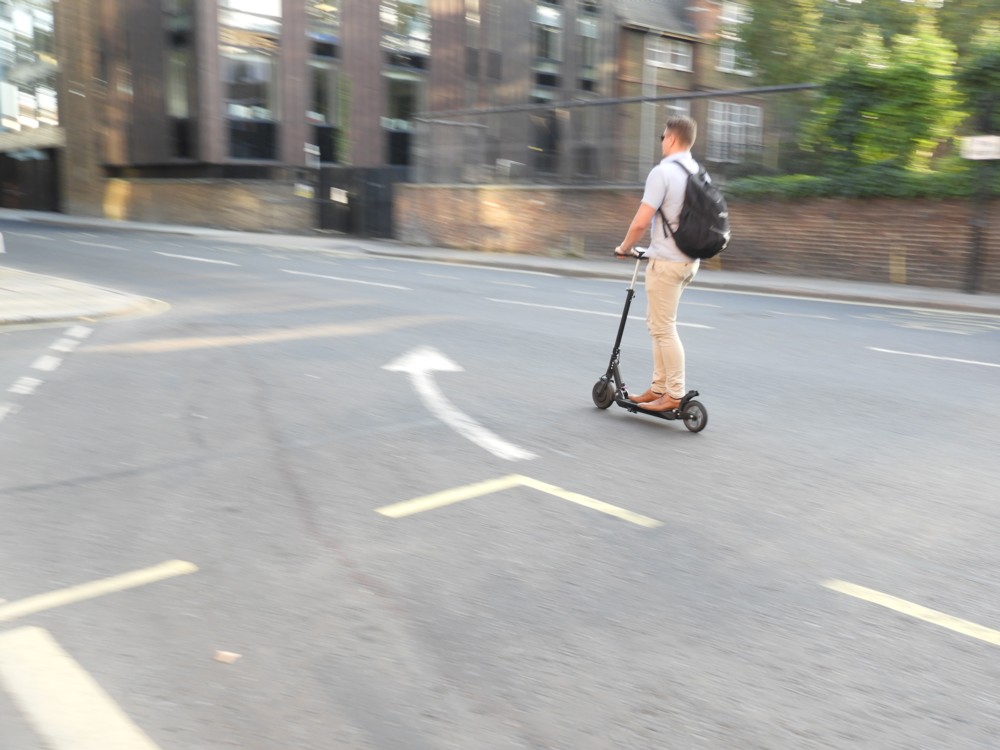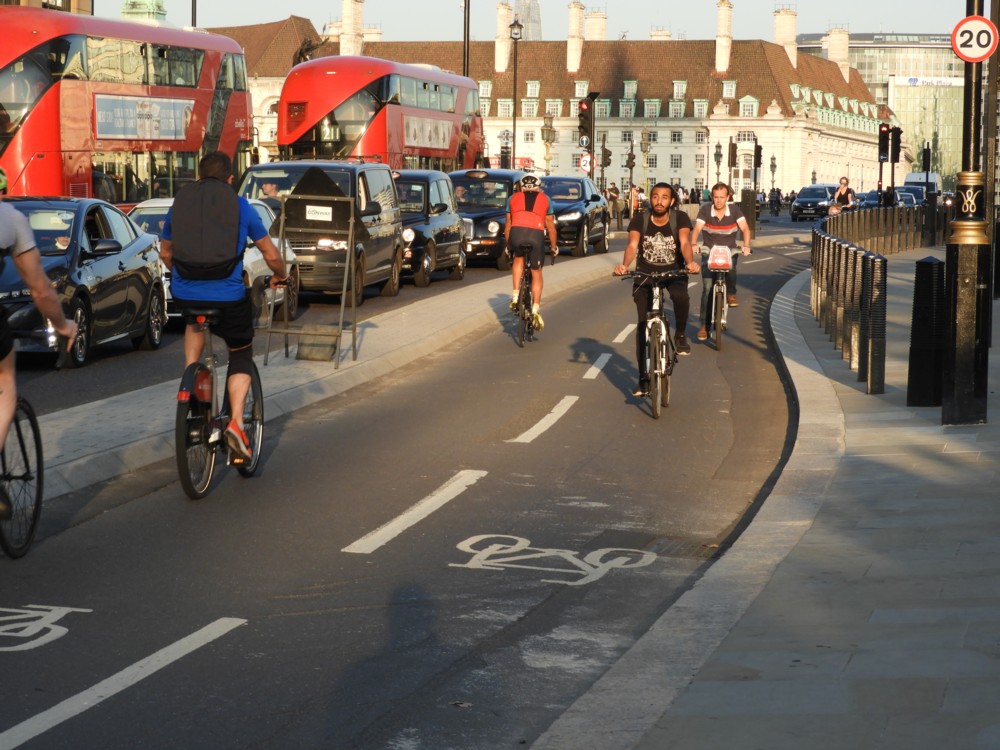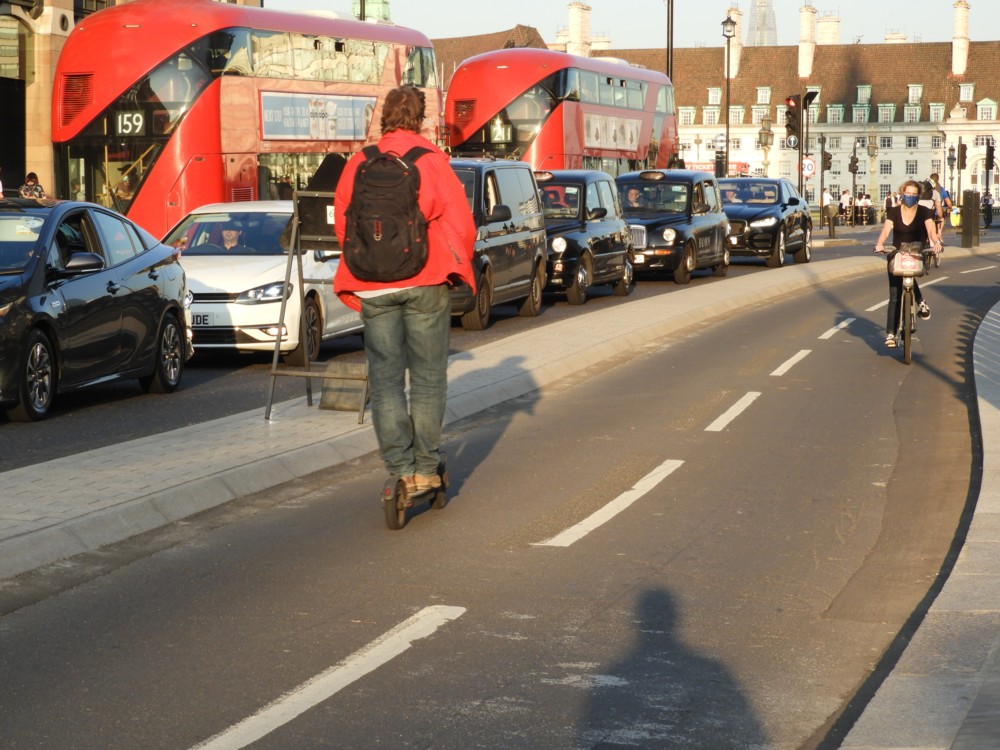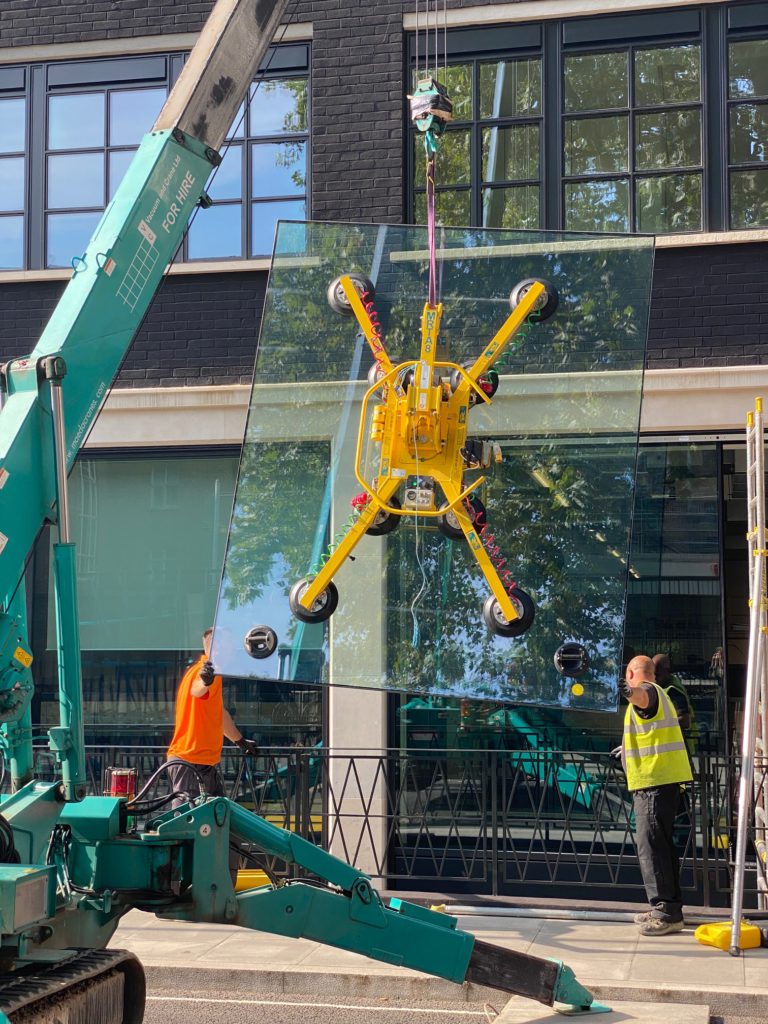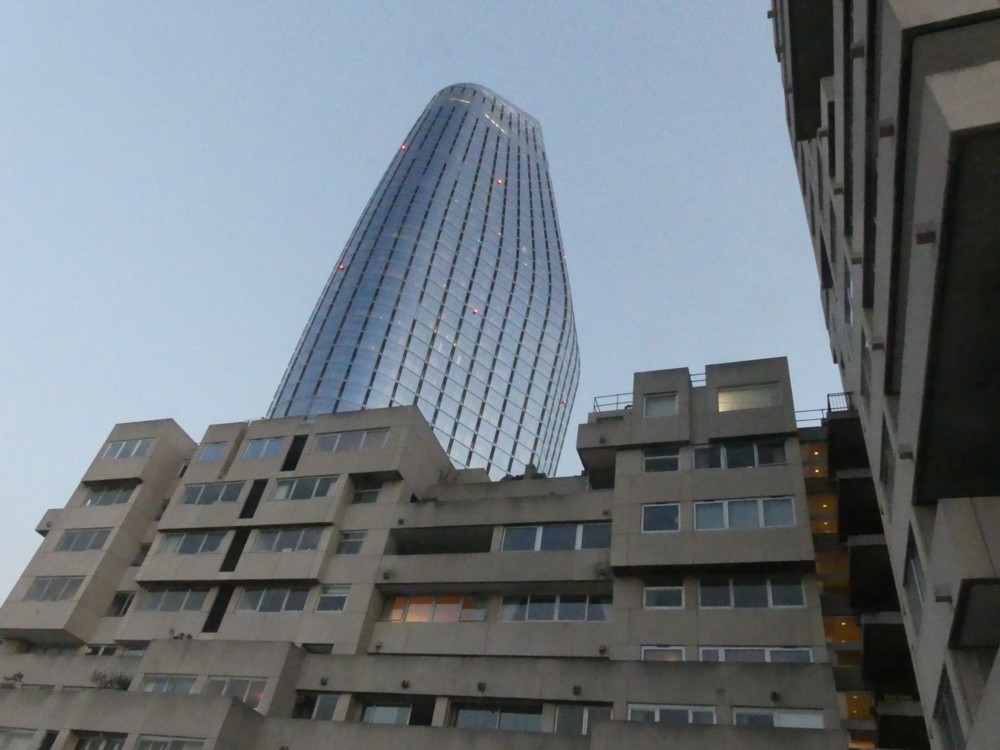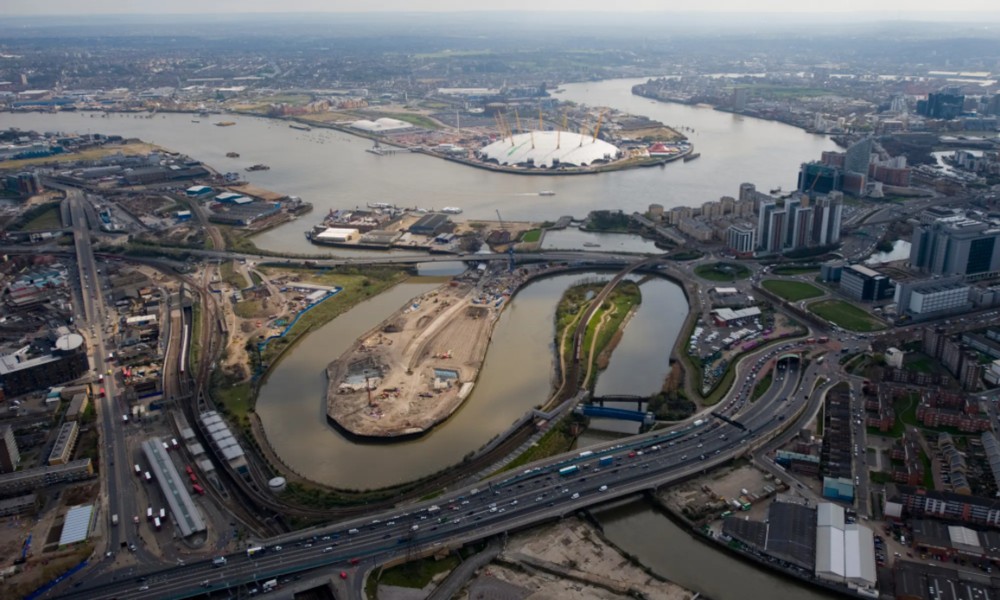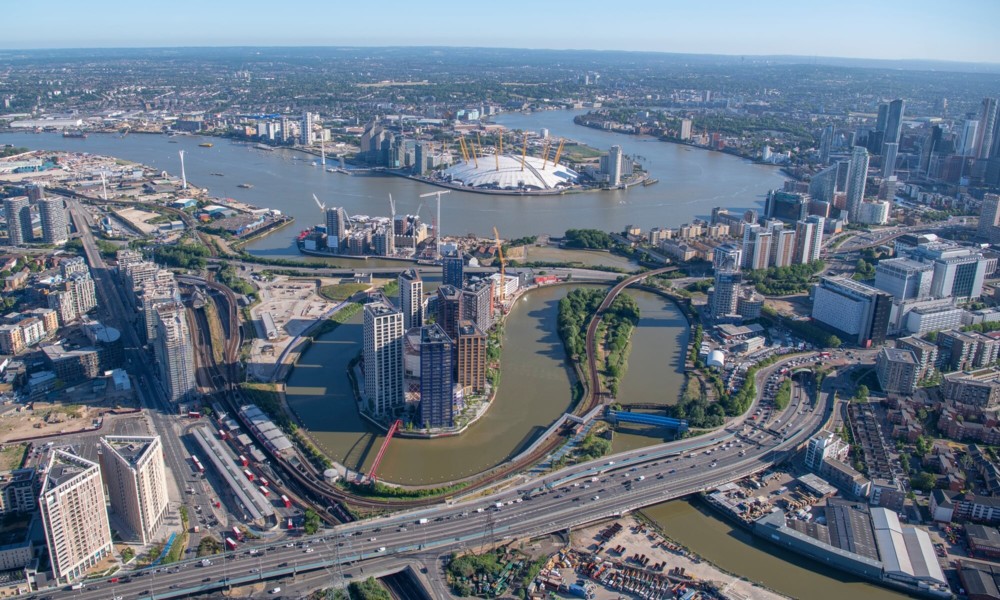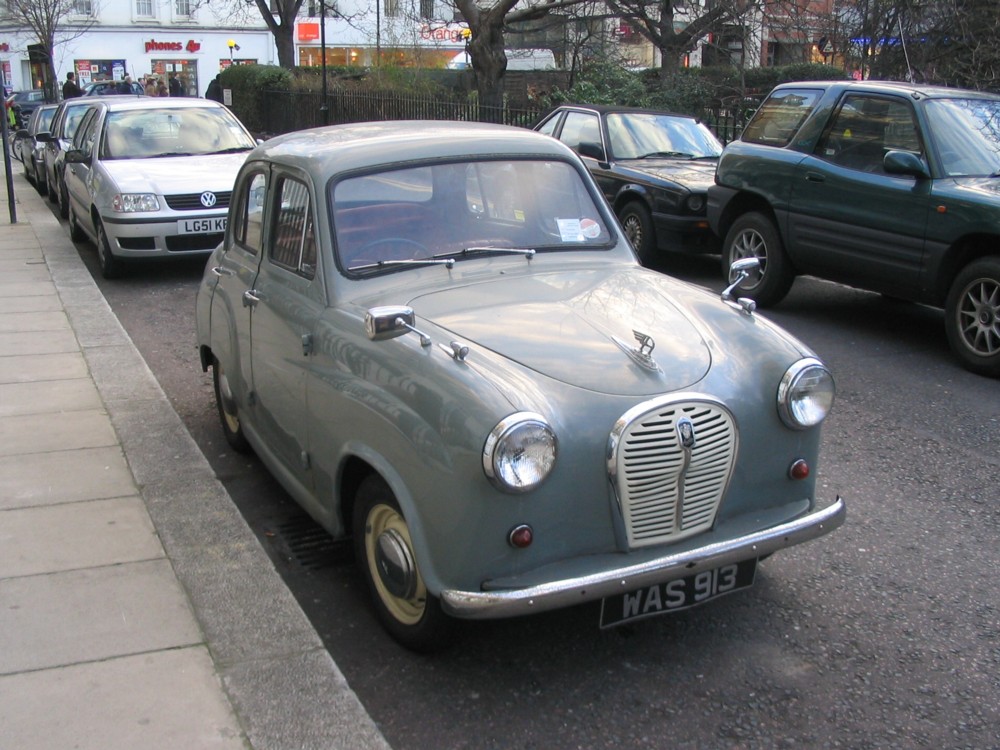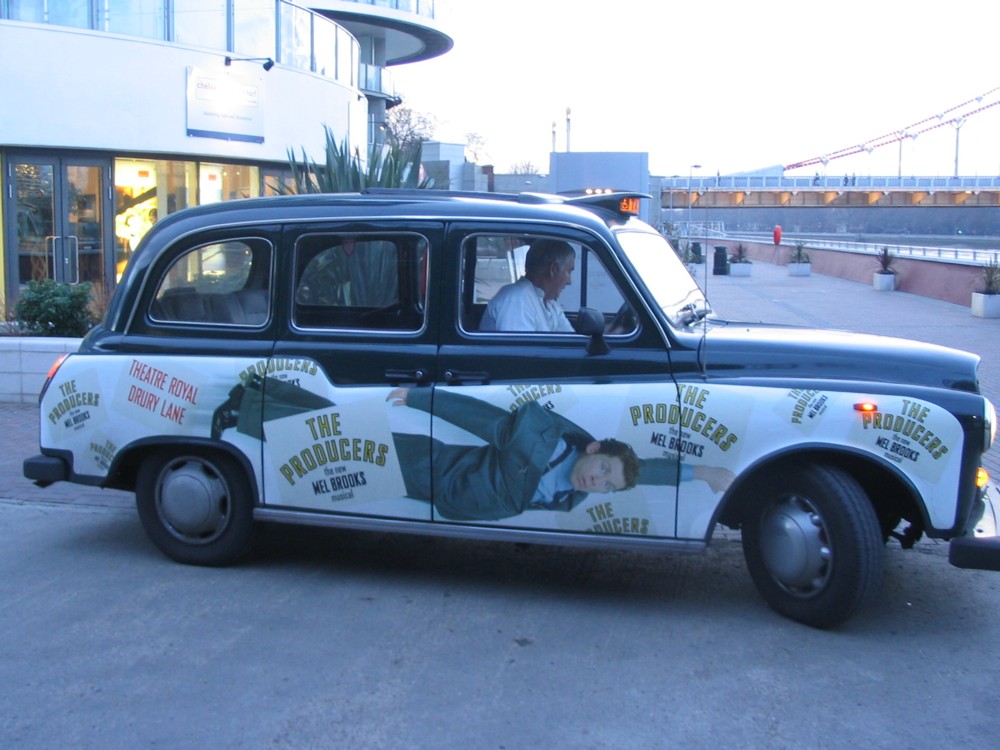If obliged to select just one of the many photos I have photoed during Lockdown and before Lockdown was over and done with (i.e. now and for the foreseeable future until all this nonsense ends and we can get back to whatever the new normal turns out to be), I think I might well choose this one:
The big point about the photo above, photoed earlier this week, is the state of the road that the e-scooter is travelling on. No other traffic. London is still in a state of semi-Lockdown, of a semi-voluntary sort. Roads like the one you see above are often empty, and into this emptiness several dozens of e-scooters have raced joyously, as shown above. But if and when anything resembling normality returns to this road, it will fill up with regular traffic, and it will then change from the total safety you see above to a state more like “you almost certainly won’t die today”. For an e-scooter, it will be like being in Bomber Command during the war. Your chances of surviving the next trip will be quite good. Surviving a tour of two dozen operations, not so much. Commute every day for ever and you’re doomed to severe injury or worse.
A few dozen minutes later, in Parliament Square, I saw something with much more of a future, namely a fully functioning bicycle road, both ways, with a white line in the middle, just like a regular car road. And all this in a spot which has been a shambles for about half of the last decade, on the Parliament approach to Westminster Bridge, with Big Ben up on the right as we look:
And then, on this same cycle road, an e-scooter:
That arrangement has a future, because this is a glimpse of the new normal. E-scooting and bicycles seem to coexist very happily safely. This is especially so if the e-scooters make a point of going at the same speed as the cyclists, whenever overtaking would be any problem. The point being that e-scooters can go much faster than bicycles, but often shouldn’t.
I was going to show a couple more e-scooter photos, but a blogging rule I constantly forget but have remembered now is: if you can separate out your points into separate postings, it’s probably best to do that.
So, I’ll end on this point. Bicycles and heavy motorised traffic don’t go together well. But bicycles and e-scooters, with the heavy traffic removed, that works very well.
Just as bikes flattened the roads to make way, literally, for the first cars, so too now, bikes are now narrowing their roads, to exclude those same cars and to make way for e-scooters. I believe “History” to be in the category list for this posting with good reason.

